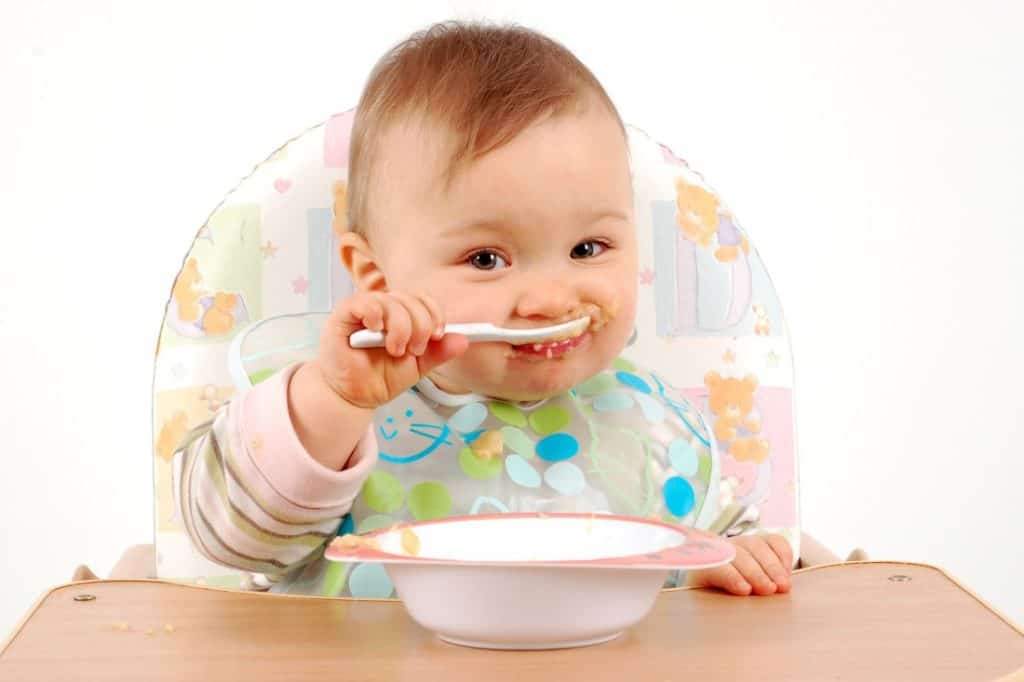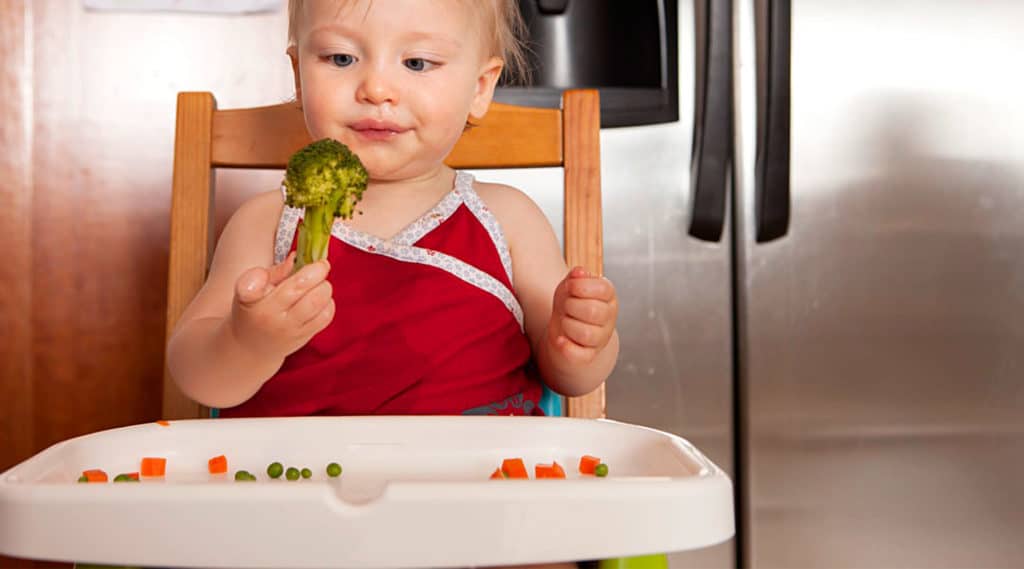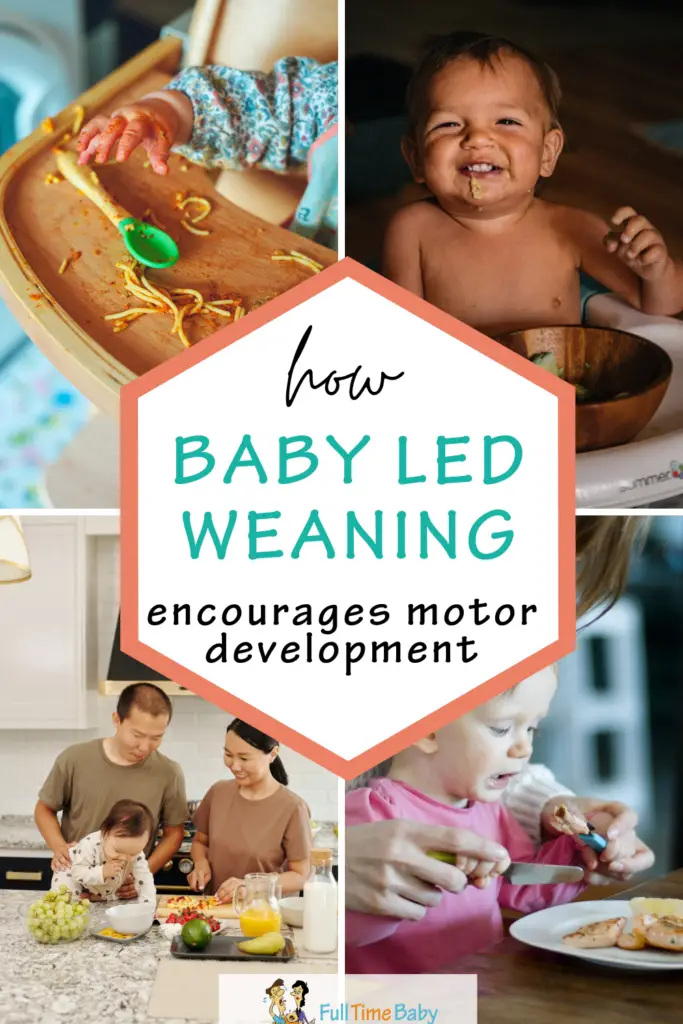Introducing solids to a baby is an important yet challenging milestone for parents. The challenge being, ‘how do you introduce solids to the baby?’ Some parents may decide on the traditional method of introducing solid food, using pureed foods, whereas others lean towards an alternative feeding method, the baby-led weaning method. While it’s understood that there are pros and cons to both methods, did you know that baby-led weaning also encourages motor development?
Read on to find out all about baby-led weaning, its benefits, and its role in developing both your child’s feeding and motor skills.
When to Introduce Solids to A Baby?
The American Academy of Pediatrics (AAP) recommends that solids (or any food other than breast milk and infant formula) be introduced to children following 6 months of age. But first, check for your child’s readiness. Your baby should:
- Have developed good head and neck control.
- Be able to sit independently without support.
- Be curious about other food, as seen by them reaching out for your food while you’re eating.
- Have developed proper oral skills such as mouth opening, an integrated tongue thrust reflex, and adequate swallowing.
Which Solids Must Be First Introduced To A Baby?
The goal of introducing solid food is to ensure that your child learns to eat a full healthy nutritious meal (besides breast milk and infant formula) by the age of one year. While there is no fixed order to introducing the different food groups, try to expose your child to a wide range of foods so that he or she learns the tastes of them all. To make feeding infants easier, here are some weaning guidelines that you can follow:
- Continue giving breast milk and infant formula as you start off with the solid feeding.
- Include iron-rich food in your baby’s diet first. This includes iron-fortified cereal, mashed beans, finely minced fish and meat, and cooked egg yolks, followed by food rich in Vitamin C, as your child learns to tolerate more variety of food in their diet.
- Observe your child for any food allergies. If you notice your child showing an adverse reaction (vomiting, hives, rashes, and diarrhea) to any food groups, immediately stop feeding your infant that and contact your doctor.
- Always be present with your baby during their mealtimes, to prevent accidents of choking or gagging.
Pureed Food vs Baby-Led Weaning- How To Introduce Solids To your Baby?
Do you start with pureed food or baby-led weaning? This has been a well-debated topic.
Earlier, giving pureed foods was the traditional and preferred method of introducing solids to babies. However, the last 10-15 years witnessed the growth in popularity of an alternate infant feeding practice, known as the baby-led weaning approach. It was made all the more famous by the publication of the book ‘Baby-Led Weaning: The Essential Guide to Introducing Solid Foods” by Gill Rapley in 2008. This approach gave babies the control to self-regulate their feeds.
To get a clearer idea of baby-led weaning, lets’ compare it with the pureed food method:
| Pureed Food | Baby-Led Weaning | |
| Food type | Specially prepared pureed food. | Whole family foods in the form of finger food, or small biteable sizes. |
| Feeding method | Special meals were spoon-fed by parents. | Self-feeding using hands or cutlery (as children grew older). |
| Control | Parent-centric. Parents would decide on the type and quantity of food to be given. | Child-centric. The baby would decide on what and how much to eat. |
| Method | Different food groups are introduced one at a time, every few days to ensure that there is no adverse reaction to it. | Different food groups are introduced all at once during family mealtimes. |
| Benefits: |
|
|
| Disadvantages: |
|
|
Thus in baby-led weaning, children are active participants in the feeding process rather than passive recipients, learning independent, self-regulated feeding, and developing a better satiety-responsiveness.
Baby-Led Weaning and Motor Development:
The other advantage to baby-led weaning is that it provides your child with the opportunity to practice and develop their gross, fine motor skills, eye-hand coordination, and oral-motor skills.
Gross Motor Development:
Gross motor skills involve movements or tasks that require the larger muscles of the body such as those in the torso, arms, and legs. It also forms the foundation on which fine motor skills, balance, and coordination are developed.
While postural control is a requirement to initiate baby-led weaning, the process also helps to enhance this skill along with core strength, especially when the baby:
- Leans forwards or backward on their chairs.
- Rotates their body trying to reach for food kept at a distance
The longer your child sits, the more their postural control is developing. As they grow, this enhanced postural control and core strength support and help to develop:
- Increased mobility.
- Unsupported sitting on other surfaces such as the floor, small chairs, and without a lap belt for support.
- Dynamic postural, as seen when your child safely reaches (without falling forwards, backward, or sideways) for toys kept at a distance when sitting independently (without external support or self-propping).
- Smooth coordinated movements while reaching for food.
Fine Motor Development:
Fine motor skills are extremely essential to the process of feeding. Be it to pick up a piece of food, or to use cutlery, these tasks require the use of smaller muscles of our wrists and hands. When a baby starts with the BLW process, they use a palmar grasp, a whole hand type of grasp using both the palm and fingers. But as your child progresses with the BLW process, so does his/her fine motor skills, in the form of:
- Inferior pincer grasp: Babies learn to pick up small pieces of food like Cheerios by using the sides of their thumb, index, and middle finger, while resting the forearm on the table for support.
- Superior pincer grasp: They can pick up smaller food pieces without resting their forearms on the table.
- Tripod grasp: Using the thumb, index, and middle fingers to hold cutlery.
- Adequate pinch strength: Have you noticed how your child drops a lot of food as they start out and gradually learn to successfully pick up and hold on to the food until it reaches their mouth. This is because the repetitive movements of feeding increase pinch strength, by which the child can continue holding on to the food after picking it up.
- In-hand manipulation skills: This helps to move food from the palm to the tips of the finger, and to position the cutlery correctly when scooping food or for cutting food.
As their fine motor skills improve, so does the child’s ability to hold and use the cutlery correctly and efficiently.
Coordination:
Self-feeding using the BLW process also improves your child’s coordination. It brings about:
- Coordinated forearm and wrist movement to pick up food pieces smoothly. In the initial stages, they will have trouble lifting food to the mouth.
- Good eye-hand coordination for reaching, picking up, and transferring food from plate to mouth.
- Bilateral coordination, enabling the child to correctly use both sides of the body/ two hands effectively while eating. For instance, using both the spoon and fork or cutting food using the knife and fork. Even lifting a sippy cup requires bilateral coordination.
Oral Motor Development:
Most importantly, here is how your child’s oral-motor development occurs with BLW.
At the start, the child:
- Demonstrates an improved range of tongue movement, upwards and downwards.
- Differentiated suck and swallow ability, enabling children to continue holding the food in the mouth, before swallowing.
With progress, children develop:
- Tongue lateralization, enabling them to move from side t side in the mouth. It also causes children to pocket food in their cheek.
- Adequate jaw movements for chewing (rotary movements) and munching the food.
- Lip closure while chewing, for taking food off a spoon, and for drinking without spilling.
- Coordinated movements of lips, tongue, teeth, and jaw.
The baby-led weaning process does more than just teaching your child to be independent at eating. Instead, it brings about holistic development, facilitating their motor skills.










